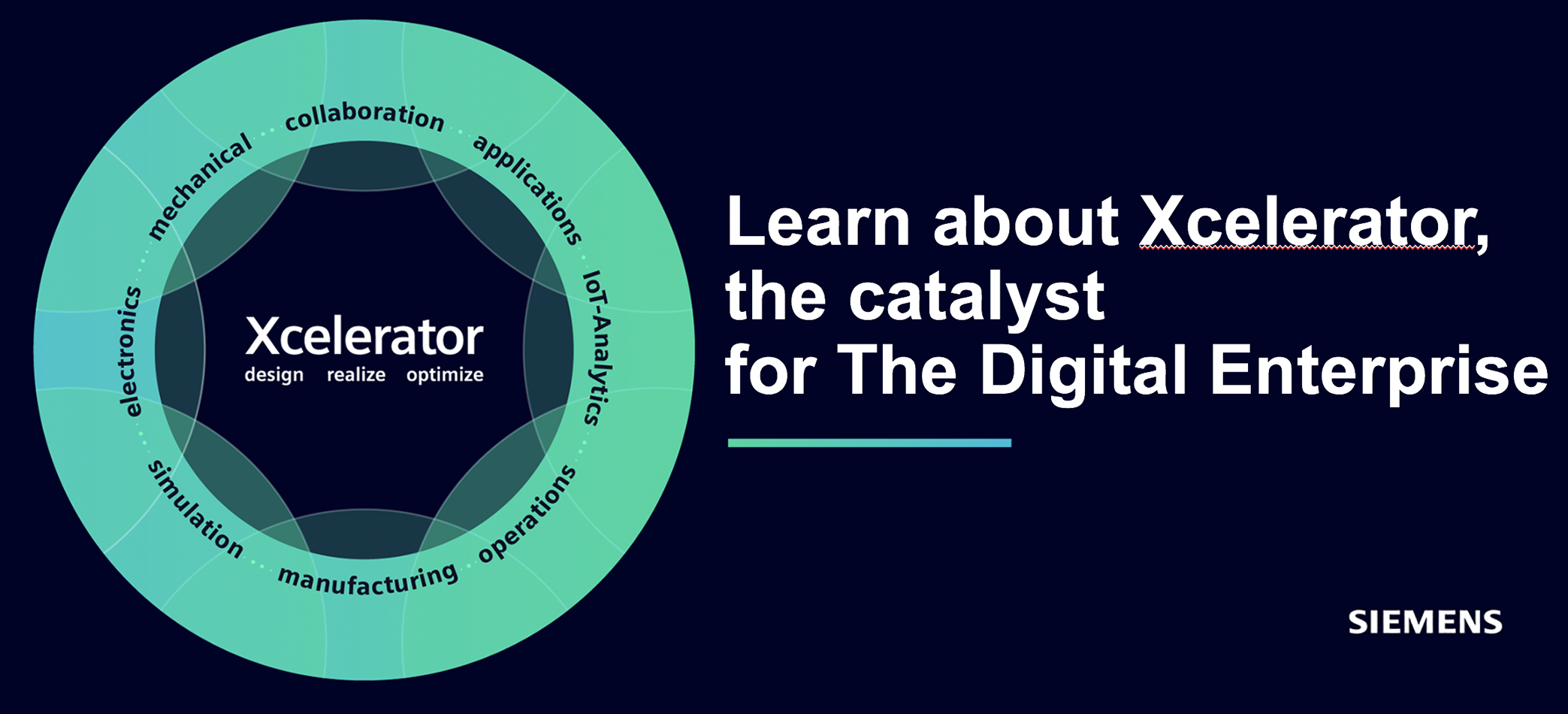HÅLLBARHET: ABB och Epiroc vässar samarbetet kring batterielektriska system efter milstolpen i Bolidengruvan
När ABB och Epiroc i april 2024 annonserade att man implementerat världens första batterielektriska underjordiska trolleytruck-system vid Bolidens gruva i Kristineberg, passerades en milstolpe som gav blodad tand. Idag annonserar man en generell avsiktsförklaring (MoU) kring fortsatt utveckling av underjordisk trolleyutrustning. Syftet är att samarbeta om heltäckande och integrerade lösningar för gruvbranschen som ökar produktiviteten, samtidigt som målen för minskade koldioxidutsläpp uppfylls.
Enligt avtalet kommer team från de båda företagen att genomföra en omfattande förstudie kring gemensamma erbjudanden. Syftet är att uppfylla strikta krav för industriella tillämpningar inom gruvdrift, med produktivitet, hållbarhet och kraftfull, automatiserad och säker drift i åtanke.
Hur ser bolagens möjligheter ut att ta detta projekt i hamn? Utmärkta, inte minst då relaterat till det första batterielektriska trolleytrucksystem för underjordiska gruvor, som togs fram tillsammans med Boliden. Men den teknologiska utvecklingen är bara en sida av myntet, den andra handlar om efterfrågan och där ser det ljust ut: Enligt ABBs rapport Mining’s Moment anser 76 % av de globala gruvföretagen att elektrifiering av fordon kommer att ge stora fördelar avseende både hållbarhet och effektivitet. Dessutom planerar 42 % att göra investeringar för att minska koldioxidutsläpp från fordonsflottorna till 2026.
”Samarbete inom branschen är avgörande för att skynda på utvecklingen av våra gruvkunders resa mot minskade utsläpp”, säger Wayne Symes, President för Epirocs Underground Division. ”Vi fördjupar partnerskapet med ABB för att ta fram en strategisk plan för hållbar och innovativ gruvdrift, med början i minskning av koldioxidutsläpp för gruvtruckar. Detta gör att vi kan utöka trolleysystemet så att det uppfyller de bredare branschbehoven.”
En intressant aspekt i sammanhanget är användningen av PLM-verktyg i utvecklingsarbetet och inte minst då hur Epirocs ambitiösa satsning på området färgar in i samarbetsprojekt av den här magnituden. PLM&ERP News publicerade för en tid sedan en djupdykning i detta Epiroc-projekt. Bolaget jobbar med verktyg som PTCs CREO CAD (Design), Siemens TEAMCENTER (PLM/PDM), och Infor M3 (ERP). EPIROCs digitaliseringsledare, JOHN NYDAHL, berättade om visionen: ”Vad vi ser är behovet av en integrerad plattforms-lösning som kan hålla ihop den digitala tråden med allt ifrån den optimala produkten, designen på R&D-avdelningen och en produktkonfigurator, till digitala tvillingar och representationer av våra produkter med kapacitet att simulera produktbeteenden.”
Klicka på rubriken för att läsa mer på PLM&ERP News.
Enligt avtalet kommer team från de båda företagen att genomföra en omfattande förstudie kring gemensamma erbjudanden. Syftet är att uppfylla strikta krav för industriella tillämpningar inom gruvdrift, med produktivitet, hållbarhet och kraftfull, automatiserad och säker drift i åtanke.
Hur ser bolagens möjligheter ut att ta detta projekt i hamn? Utmärkta, inte minst då relaterat till det första batterielektriska trolleytrucksystem för underjordiska gruvor, som togs fram tillsammans med Boliden. Men den teknologiska utvecklingen är bara en sida av myntet, den andra handlar om efterfrågan och där ser det ljust ut: Enligt ABBs rapport Mining’s Moment anser 76 % av de globala gruvföretagen att elektrifiering av fordon kommer att ge stora fördelar avseende både hållbarhet och effektivitet. Dessutom planerar 42 % att göra investeringar för att minska koldioxidutsläpp från fordonsflottorna till 2026.
”Samarbete inom branschen är avgörande för att skynda på utvecklingen av våra gruvkunders resa mot minskade utsläpp”, säger Wayne Symes, President för Epirocs Underground Division. ”Vi fördjupar partnerskapet med ABB för att ta fram en strategisk plan för hållbar och innovativ gruvdrift, med början i minskning av koldioxidutsläpp för gruvtruckar. Detta gör att vi kan utöka trolleysystemet så att det uppfyller de bredare branschbehoven.”
En intressant aspekt i sammanhanget är användningen av PLM-verktyg i utvecklingsarbetet och inte minst då hur Epirocs ambitiösa satsning på området färgar in i samarbetsprojekt av den här magnituden. PLM&ERP News publicerade för en tid sedan en djupdykning i detta Epiroc-projekt. Bolaget jobbar med verktyg som PTCs CREO CAD (Design), Siemens TEAMCENTER (PLM/PDM), och Infor M3 (ERP). EPIROCs digitaliseringsledare, JOHN NYDAHL, berättade om visionen: ”Vad vi ser är behovet av en integrerad plattforms-lösning som kan hålla ihop den digitala tråden med allt ifrån den optimala produkten, designen på R&D-avdelningen och en produktkonfigurator, till digitala tvillingar och representationer av våra produkter med kapacitet att simulera produktbeteenden.”
Klicka på rubriken för att läsa mer på PLM&ERP News.
AI boostar efterfrågan på datacenter och sätter press på behoven av energi och effektiv...
Så kan datacenters kylteknik minska vattenstress: anpassning efter platsens ekologiska förutsättningar. Efterfrågan på datacenter ökar kraftigt, inte minst på grund av AI-utvecklingen. Enligt Goldman Sachs Research förväntas energianvändningen i datacenter öka med 160 procent fram till 2030. Tillväxten innebär att datacenter måste hantera både en ökande energianvändning och ett behov av effektiv kylning.
”Ett välplanerat kylsystem är avgörande för att säkerställa både energieffektivitet och hållbarhet. Men också vattenanvändningen måste vägas in, särskilt i områden där vattenbrist redan är ett problem,” säger Alex Setmajer, hållbarhetschef för ekologi på Equinix.
Sveriges datacenter står inför nya utmaningar i takt med att klimatförändringarna gör vatten till en alltmer begränsad resurs vilket förklarar vikten av att våra datacenter investerar i vattenfria kyltekniker för att möta framtidens behov och krav.
“Med ökande lokal vattenstress måste vi tänka om hur vi designar och driver datacenter”, säger Alex Setmajer.
Vattenstress är ett bredare begrepp än vattenbrist och inkluderar tillgången till vatten i ett område samt faktorer som vattenkvalitet och tillgänglighet. I områden där vatten är en begränsad resurs kan valet av industriella kylsystem vara avgörande för att minimera påverkan på lokalsamhället. Valet av kylteknik påverkar datacentrens totala resursanvändning. Alex Setmajer förklarar att de vanligaste metoderna – luftkylning och ångkylning – har olika fördelar och nackdelar beroende på de lokala förutsättningarna.
”Ångkylning är energieffektivt men kräver stora mängder vatten, vilket kan skapa problem i områden med vattenstress. Luftkylning är ett bra alternativ där vatten är en begränsad resurs. Denna kylteknik leder dock till högre energiförbrukning,” förklarar Equinix hållbarhetschef och pekar i dagens artikel på potentialen som finns i geotermisk kylning och värmeåtervinning.
Klicka på rubriken för att läsa mer på PLM&ERP New.
”Ett välplanerat kylsystem är avgörande för att säkerställa både energieffektivitet och hållbarhet. Men också vattenanvändningen måste vägas in, särskilt i områden där vattenbrist redan är ett problem,” säger Alex Setmajer, hållbarhetschef för ekologi på Equinix.
Sveriges datacenter står inför nya utmaningar i takt med att klimatförändringarna gör vatten till en alltmer begränsad resurs vilket förklarar vikten av att våra datacenter investerar i vattenfria kyltekniker för att möta framtidens behov och krav.
“Med ökande lokal vattenstress måste vi tänka om hur vi designar och driver datacenter”, säger Alex Setmajer.
Vattenstress är ett bredare begrepp än vattenbrist och inkluderar tillgången till vatten i ett område samt faktorer som vattenkvalitet och tillgänglighet. I områden där vatten är en begränsad resurs kan valet av industriella kylsystem vara avgörande för att minimera påverkan på lokalsamhället. Valet av kylteknik påverkar datacentrens totala resursanvändning. Alex Setmajer förklarar att de vanligaste metoderna – luftkylning och ångkylning – har olika fördelar och nackdelar beroende på de lokala förutsättningarna.
”Ångkylning är energieffektivt men kräver stora mängder vatten, vilket kan skapa problem i områden med vattenstress. Luftkylning är ett bra alternativ där vatten är en begränsad resurs. Denna kylteknik leder dock till högre energiförbrukning,” förklarar Equinix hållbarhetschef och pekar i dagens artikel på potentialen som finns i geotermisk kylning och värmeåtervinning.
Klicka på rubriken för att läsa mer på PLM&ERP New.
Former SAP and Infor Man Takes Over at Unit4: “The Goal is to Reach...
MIKE ETTLING hands over the helm to SIMON PARIS. One of the major Nordic players in the ERP market, Unit4, is changing CEO. Mike Ettling is handing over the executive leadership to Simon Paris. Ettling has headed Unit4 for almost six years and has led the company to growth, created recurring revenue and established Unit4 as a major global player in cloud-based business systems.
The new boss, Simon Paris, is an experienced business leader with over 25 years in the technology industry, including senior positions at Infor and SAP. He was most recently CEO of Finastra, an international provider of software applications for financial services, where he led the company's transformation and growth strategy to become one of the largest FinTech companies in the world.
Unit4, which has invested heavily in cloud-based applications in recent years, writes in a press release that, "the transition ensures continuity for Unit4 and builds on a proven strategy that has elevated the company to a leading provider of cloud-based business systems for various industries." It is further claimed that the now announced transition has been preceded by careful planning where Ettling, together with the board, collaborated to ensure a seamless handover and continued strong momentum.
It is also clear that under Ettling's leadership, Unit4 has undergone a transformation into a Cloud-first company and achieved significant results in both product innovation and growth. Financially, Ettling points out that recurring revenues now account for 80 percent of the total. This level has been created by long-term organic growth, a functioning strategy for cloud migration and high customer satisfaction, which strengthens the company's reputation as a reliable partner for mid-sized organizations. The specialized, industry-focused applications enable customers to effectively manage their people, projects and operations with efficiency and reliability.
Morgan Seigler, who is an executive at Unit4's main owner, TA Associates, states that they have been very pleased with Mike Ettling's work:
"He has been an outstanding leader and we are grateful for his tremendous contribution. We believe that Simon's leadership, vision and experience will ensure a natural transition and help Unit4's continued success."
Ettling himself says that Simon Paris is an outstanding leader with a proven track record: "Simon Paris has all the qualities required to build on this foundation and lead us towards our ambitious goal of one billion euros in revenue. Over the past few years, we have transformed the company and established it as the industry leader in cloud-based ERP for service industries."
Clkick on the headline to read more on PLM&ERP News.
The new boss, Simon Paris, is an experienced business leader with over 25 years in the technology industry, including senior positions at Infor and SAP. He was most recently CEO of Finastra, an international provider of software applications for financial services, where he led the company's transformation and growth strategy to become one of the largest FinTech companies in the world.
Unit4, which has invested heavily in cloud-based applications in recent years, writes in a press release that, "the transition ensures continuity for Unit4 and builds on a proven strategy that has elevated the company to a leading provider of cloud-based business systems for various industries." It is further claimed that the now announced transition has been preceded by careful planning where Ettling, together with the board, collaborated to ensure a seamless handover and continued strong momentum.
It is also clear that under Ettling's leadership, Unit4 has undergone a transformation into a Cloud-first company and achieved significant results in both product innovation and growth. Financially, Ettling points out that recurring revenues now account for 80 percent of the total. This level has been created by long-term organic growth, a functioning strategy for cloud migration and high customer satisfaction, which strengthens the company's reputation as a reliable partner for mid-sized organizations. The specialized, industry-focused applications enable customers to effectively manage their people, projects and operations with efficiency and reliability.
Morgan Seigler, who is an executive at Unit4's main owner, TA Associates, states that they have been very pleased with Mike Ettling's work:
"He has been an outstanding leader and we are grateful for his tremendous contribution. We believe that Simon's leadership, vision and experience will ensure a natural transition and help Unit4's continued success."
Ettling himself says that Simon Paris is an outstanding leader with a proven track record: "Simon Paris has all the qualities required to build on this foundation and lead us towards our ambitious goal of one billion euros in revenue. Over the past few years, we have transformed the company and established it as the industry leader in cloud-based ERP for service industries."
Clkick on the headline to read more on PLM&ERP News.
F d SAP- och Infor-man tar över jobbet som toppchef på Unit4: ”Målet är...
MIKE ETTLING lämnar över rodret till SIMON PARIS. En av ERP-marknadens större nordiska spelare, Unit4, byter CEO. Det är Mike Ettling som lämnar över det exekutiva chefskapet till Simon Paris. Ettling har lett Unit4 i nästan sex år och lyft företaget till tillväxt, skapat återkommande intäkter och etablerat Unit4 som en stor global aktör inom molnbaserade affärssystem.
Nye chefen, Simon Paris, är en erfaren företagsledare med över 25 år inom teknikbranschen i bagaget, bland annat från ledande befattningar på Infor och SAP. Han var senast CEO för Finastra, en intenationell leverantör av mjukvaruapplikationer för finansiella tjänster, där han ledde företagets omvandling och tillväxtstrategi till att bli ett av de största FinTech-företagen i världen.
Unit4, som under de senaste åren satsat hårt på molnbaserade applikationer för organisationer, skriver i en pressrelease att, ”övergången säkerställer kontinuitet för Unit4 och bygger vidare på en beprövad strategi som lyft företaget till en ledande leverantör av molnbaserade affärssystem för olika branscher. ”Man hävdar vidare att den nu annonserade övergången har föregåtts av noggrann planering där Ettling tillsammans med styrelse samarbetat för att säkerställa en sömlös överlämning och ett fortsatt starkt momentum.
Klart är också att Unit4 under Ettlings ledning har genomgått en omvandling till ett Cloud-first-företag och uppnått betydande resultat inom både produktinnovation och tillväxt. Finansiellt pekar Ettling på att de återkommande intäkterna nu står för 80 procent av totalen. Denna framgång har skapats av en långsiktig organisk tillväxt, en fungerande strategi för molnmigrering och branschens bästa kundnöjdhet, vilket stärker företagets rykte som en pålitlig partner för medelstora organisationer. De specialiserade, branschfokuserade applikationerna gör det möjligt för kunderna att effektivt hantera sina medarbetare, projekt och verksamheter med effektivitet och tillförlitlighet.
Morgan Seigler, som är exekutiv bas på Unit4s huvudägare, TA Associates, konstaterar att man varit mycket nöjda med Mike Ettlings arbete:
"Han har varit en enastående ledare och vi är tacksamma för hans enorma bidrag. Vi tror att Simons ledarskap, vision och erfarenhet kommer att säkerställa en naturlig övergång och hjälpa till med Unit4s fortsatta framgång."
Själv säger Ettling att Simon Paris är en, enastående ledare med en dokumenterad meritlista och någon som jag har haft förmånen att arbeta framgångsrikt med tidigare: ”Paris har alla de kvaliteter som krävs för att bygga vidare på denna grund och leda oss mot vårt ambitiösa mål om en miljard euro i intäkter. Under de senaste åren har vi förvandlat företaget och etablerat det som branschledande inom molnbaserade affärssystem för tjänstebranscher.”
Klicka på rubriken för att läsa mer på PLM&ERP News.
Nye chefen, Simon Paris, är en erfaren företagsledare med över 25 år inom teknikbranschen i bagaget, bland annat från ledande befattningar på Infor och SAP. Han var senast CEO för Finastra, en intenationell leverantör av mjukvaruapplikationer för finansiella tjänster, där han ledde företagets omvandling och tillväxtstrategi till att bli ett av de största FinTech-företagen i världen.
Unit4, som under de senaste åren satsat hårt på molnbaserade applikationer för organisationer, skriver i en pressrelease att, ”övergången säkerställer kontinuitet för Unit4 och bygger vidare på en beprövad strategi som lyft företaget till en ledande leverantör av molnbaserade affärssystem för olika branscher. ”Man hävdar vidare att den nu annonserade övergången har föregåtts av noggrann planering där Ettling tillsammans med styrelse samarbetat för att säkerställa en sömlös överlämning och ett fortsatt starkt momentum.
Klart är också att Unit4 under Ettlings ledning har genomgått en omvandling till ett Cloud-first-företag och uppnått betydande resultat inom både produktinnovation och tillväxt. Finansiellt pekar Ettling på att de återkommande intäkterna nu står för 80 procent av totalen. Denna framgång har skapats av en långsiktig organisk tillväxt, en fungerande strategi för molnmigrering och branschens bästa kundnöjdhet, vilket stärker företagets rykte som en pålitlig partner för medelstora organisationer. De specialiserade, branschfokuserade applikationerna gör det möjligt för kunderna att effektivt hantera sina medarbetare, projekt och verksamheter med effektivitet och tillförlitlighet.
Morgan Seigler, som är exekutiv bas på Unit4s huvudägare, TA Associates, konstaterar att man varit mycket nöjda med Mike Ettlings arbete:
"Han har varit en enastående ledare och vi är tacksamma för hans enorma bidrag. Vi tror att Simons ledarskap, vision och erfarenhet kommer att säkerställa en naturlig övergång och hjälpa till med Unit4s fortsatta framgång."
Själv säger Ettling att Simon Paris är en, enastående ledare med en dokumenterad meritlista och någon som jag har haft förmånen att arbeta framgångsrikt med tidigare: ”Paris har alla de kvaliteter som krävs för att bygga vidare på denna grund och leda oss mot vårt ambitiösa mål om en miljard euro i intäkter. Under de senaste åren har vi förvandlat företaget och etablerat det som branschledande inom molnbaserade affärssystem för tjänstebranscher.”
Klicka på rubriken för att läsa mer på PLM&ERP News.
HEXAGON acquires company with groundbreaking positioning solution for navigation and autonomous applications
RELIABLE POSITIONING, down to the CENTIMETER LEVEL in everything from AUTOMOTIVE and UAVs to CONSTRUCTION and LOGISTICS. Hexagon, a Swedish industry group that supplies measurement and positioning systems for objects in both the micro and macro segments, announces the acquisition of the Belgian company Septentrio NV. The latter is a market leader and OEM provider of technologies for global navigation satellite systems, Global Navigation Satellite System (GNSS), to drive innovation and expand the market reach of Resilient Assured Positioning solutions. More specifically, Septentrio designs, manufactures and sells high-precision multi-frequency and constellation GNSS receivers for use in demanding applications.
”The company's receivers deliver accurate and reliable positioning, down to the centimeter level,” says,” Norbert Hanke, interim CEO of Hexagon.
Currently, GNSS/GPS is used in a variety of areas where the use of accurate, constantly available position and time information is required. Reliable centimeter-level positioning enables, for example, machine automation that improves efficiency and safety. In this, Septentrio provides solutions for industrial applications such as robotics, construction, mapping and surveying, maritime, logistics and unmanned aerial vehicles (UAV). In terms of industry, it is found in agriculture, transportation, machine control, marine navigation, vehicle navigation, mobile communications and, interestingly, also athletics.
By combining Septentrio's GNSS platform with Hexagon's extensive positioning portfolio, including sensor fusion, anti-jamming, correction services and perception technologies, Hexagon believes that, "it will enable groundbreaking solutions for various markets and applications that ensure greater accessibility to high-precision and high-performance positioning technology with low SWaP (Size, Weight and Power) characteristics. ”
Norbert Hanke, claims that today’s announced acquisition will accelerate the adoption of autonomous systems in existing markets and meet the needs of emerging high-growth segments such as robotics, UAVs, autonomy and other mission-critical applications.
“The combination of Hexagon and Septentrio will transform the positioning industry across existing and new markets and set new standards for the accuracy, resilience and scalability of positioning technologies, necessary to support and accelerate the journey towards full autonomy,” he says in a comment.
Examples of Septentrio customers are Swedish defense giant Saab Group and Xenomatix, an established tier II automotive supplier providing LiDAR based solutions enabling autonomous driving.
How will the now announced purchase strengthen Hexagon? Click on the headline to read the full story on PLM&ERP News.
”The company's receivers deliver accurate and reliable positioning, down to the centimeter level,” says,” Norbert Hanke, interim CEO of Hexagon.
Currently, GNSS/GPS is used in a variety of areas where the use of accurate, constantly available position and time information is required. Reliable centimeter-level positioning enables, for example, machine automation that improves efficiency and safety. In this, Septentrio provides solutions for industrial applications such as robotics, construction, mapping and surveying, maritime, logistics and unmanned aerial vehicles (UAV). In terms of industry, it is found in agriculture, transportation, machine control, marine navigation, vehicle navigation, mobile communications and, interestingly, also athletics.
By combining Septentrio's GNSS platform with Hexagon's extensive positioning portfolio, including sensor fusion, anti-jamming, correction services and perception technologies, Hexagon believes that, "it will enable groundbreaking solutions for various markets and applications that ensure greater accessibility to high-precision and high-performance positioning technology with low SWaP (Size, Weight and Power) characteristics. ”
Norbert Hanke, claims that today’s announced acquisition will accelerate the adoption of autonomous systems in existing markets and meet the needs of emerging high-growth segments such as robotics, UAVs, autonomy and other mission-critical applications.
“The combination of Hexagon and Septentrio will transform the positioning industry across existing and new markets and set new standards for the accuracy, resilience and scalability of positioning technologies, necessary to support and accelerate the journey towards full autonomy,” he says in a comment.
Examples of Septentrio customers are Swedish defense giant Saab Group and Xenomatix, an established tier II automotive supplier providing LiDAR based solutions enabling autonomous driving.
How will the now announced purchase strengthen Hexagon? Click on the headline to read the full story on PLM&ERP News.
Volvo Group’s Chief Puts His Foot Down at CES in Las Vegas: ”The Time...
AUTOMOTIVE/CES 2025 in LAS VEGAS/SUSTAINABILITY. When Volvo Group’s CEO Martin Lundstedt speaks today at one of the world's leading technology events, the electronics trade show CES in Las Vegas, the theme is serious but concise: "We are here in Las Vegas today to deliver a simple but urgent message: The time for talk is over. The time for action is now," he says.
Lundstedt is on hand to explain how one of the world's leading truck manufacturer views sustainability in general and decarbonization in particular.
"We have a holistic view of the decarbonization of the transport, mobility and infrastructure industry," says the Volvo boss and he urges both political decision-makers and industry leaders to accelerate the transition to zero-emission vehicles (ZEV).
"Given the challenges the world faces due to climate change, it is time to reshape the transport system for the next 100 years. Without transport, mobility and infrastructure solutions, modern life would come to a standstill. So much of our world depends on getting goods to their destination, take people to work and build communities – but we have to do it much more sustainably,” he adds.
The development also speaks a language that supports Lundstedt’s view of the development of the transport industry. With freight volumes set to increase fivefold by 2050, the transition to ZEV solutions has become a necessity. The good news is that these solutions are already available and are in continuous development, as the Volvo Group’s demonstration of advanced battery electric solutions, hydrogen fuel cell technology and renewable fuel shows.
A weighty point in Lundstedt’s reasoning is that the transition to a more efficient and cleaner transport system depends on far more than just the players in the automotive sector: among other things, it also depends on the actions of decision-makers, government and industrial leaders. Cooperation and insight into the seriousness of the situation are necessary.
“Policymakers need to accelerate the uptake of ZEV transport and infrastructure solutions. We need clean energy generation, reliable charging infrastructure and effective incentives to accelerate adoption. This transformation is not about switching to a single new product or technology – it is about accelerating a paradigm shift – and we cannot do it alone. The time for talk is over. We need to get this show going, and we need to start now,” says Martin Lundstedt, whose company on the PLM side basically works in PTC environments with Creo CAD on the design side and Windchill for PLM/PDM.
What possibly underpins the frustration of the Volvo base when it comes to electric trucks is that sales both locally and globally are still very small. In 2023, this will be a share of just 1 percent for heavy vehicles. But in this arena, the Volvo Group is the clear market leader.
Click on the headline to read more on PLM&ERP News.
Lundstedt is on hand to explain how one of the world's leading truck manufacturer views sustainability in general and decarbonization in particular.
"We have a holistic view of the decarbonization of the transport, mobility and infrastructure industry," says the Volvo boss and he urges both political decision-makers and industry leaders to accelerate the transition to zero-emission vehicles (ZEV).
"Given the challenges the world faces due to climate change, it is time to reshape the transport system for the next 100 years. Without transport, mobility and infrastructure solutions, modern life would come to a standstill. So much of our world depends on getting goods to their destination, take people to work and build communities – but we have to do it much more sustainably,” he adds.
The development also speaks a language that supports Lundstedt’s view of the development of the transport industry. With freight volumes set to increase fivefold by 2050, the transition to ZEV solutions has become a necessity. The good news is that these solutions are already available and are in continuous development, as the Volvo Group’s demonstration of advanced battery electric solutions, hydrogen fuel cell technology and renewable fuel shows.
A weighty point in Lundstedt’s reasoning is that the transition to a more efficient and cleaner transport system depends on far more than just the players in the automotive sector: among other things, it also depends on the actions of decision-makers, government and industrial leaders. Cooperation and insight into the seriousness of the situation are necessary.
“Policymakers need to accelerate the uptake of ZEV transport and infrastructure solutions. We need clean energy generation, reliable charging infrastructure and effective incentives to accelerate adoption. This transformation is not about switching to a single new product or technology – it is about accelerating a paradigm shift – and we cannot do it alone. The time for talk is over. We need to get this show going, and we need to start now,” says Martin Lundstedt, whose company on the PLM side basically works in PTC environments with Creo CAD on the design side and Windchill for PLM/PDM.
What possibly underpins the frustration of the Volvo base when it comes to electric trucks is that sales both locally and globally are still very small. In 2023, this will be a share of just 1 percent for heavy vehicles. But in this arena, the Volvo Group is the clear market leader.
Click on the headline to read more on PLM&ERP News.
Volvochefen Martin Lundstedt ryter ifrån på världens ledande teknikmässa: ”Tiden för prat är över,...
AUTOMOTIVE/CES 2025 i LAS VEGAS/HÅLLBARHET. När Volvo Groups koncernchef, Martin Lundstedt, idag tar till orda på ett av världens ledande teknologi-event, den stora elektronikmässan CES i Las Vegas, är temat alvarsamt men koncist:
"Vi är här i Las Vegas idag för att leverera ett enkelt men brådskande budskap: Tiden för samtal är över. Det är dags att agera nu, säger han.
Lundstedt är på plats för att berätta om hur den världledande lastbils- och busstillverkaren ser på hållbarhetsbitarna i allmänhet och avkolningen i synnerhet.
”Vi har en holistisk grundsyn avkarboniseringen av transport-, mobilitets- och infrastrukturindustrin, säger Volvo-basen i ett tal där han uppmanar såväl politiska beslutsfattare som industriledare att påskynda övergången till nollutsläppsfordon (ZEV).
”Med tanke på de utmaningar världen står inför på grund av klimatförändringarna är det dags att ombilda transportsystemet för de kommande 100 åren. Utan transport-, mobilitets- och infrastrukturlösningar skulle det moderna livet stå still. Så mycket av vår värld är beroende av att få varor till sin destination, ta människor till jobbet och bygga samhällen – men vi måste göra det betydligt mer hållbart”, tillägger han.
Utvecklingen talar också ett språk som underbygger Lundstedts syn på transportindustrins utveckling. Med en femfaldig ökning av fraktvolymerna fram till 2050 har övergången till ZEV-lösningar blivit en klar nödvändighet. Den goda nyheten är att dessa lösningar redan är tillgängliga och är i kontinuerlig utveckling, vilket Volvokoncernens uppvisning av avancerade batterielektriska lösningar, vätebränslecells-teknik och förnybart bränsle visar.
En tung poäng i Lundstedts resonemang är att ingen enskild aktör kan lösa industrins utmaningar ensam. Övergången till ett effektivare och renare transportsystem beror på betydligt fler än bara fordonssektorns spelare: bland annat hänger utvecklingen på agerandet från beslutsfattare, statliga och industriella ledare. Samarbete och insikten om situationens allvar måste till.
"Policymakare måste påskynda upptaget av ZEV-transport- och infrastrukturlösningar. Vi behöver ren energiproduktion, pålitlig laddningsinfrastruktur och effektiva incitament för att påskynda adoptionen. Denna transformation handlar inte om att byta till en enskild ny produkt eller teknologi – det handlar om att påskynda ett paradigmskifte – och vi kan inte göra det ensamma. Tiden för samtal är förbi. Vi måste få den här showen på väg, och vi måste börja nu om vi vill forma den värld vi vill leva i,” säger Martin Lundstedt, vars bolag på PLM-sidan basalt jobbar i PTC-miljöer med Creo CAD på designsidan och Windchill när det gäller PLM/PDM.
Vad som möjligen underbygger Volvo-basens frustration när det gäller eldrivna lastbilar är att försäljningen både lokalt och globalt ännu är mycket liten. 2023 rör det sig om en andel på bara 1 procent för tunga fordon. Men på denna arena är Volvo Group hur som helst klar marknadsledare.
Klicka på rubriken för att läsa mer på PLM&ERP News.
Lundstedt är på plats för att berätta om hur den världledande lastbils- och busstillverkaren ser på hållbarhetsbitarna i allmänhet och avkolningen i synnerhet.
”Vi har en holistisk grundsyn avkarboniseringen av transport-, mobilitets- och infrastrukturindustrin, säger Volvo-basen i ett tal där han uppmanar såväl politiska beslutsfattare som industriledare att påskynda övergången till nollutsläppsfordon (ZEV).
”Med tanke på de utmaningar världen står inför på grund av klimatförändringarna är det dags att ombilda transportsystemet för de kommande 100 åren. Utan transport-, mobilitets- och infrastrukturlösningar skulle det moderna livet stå still. Så mycket av vår värld är beroende av att få varor till sin destination, ta människor till jobbet och bygga samhällen – men vi måste göra det betydligt mer hållbart”, tillägger han.
Utvecklingen talar också ett språk som underbygger Lundstedts syn på transportindustrins utveckling. Med en femfaldig ökning av fraktvolymerna fram till 2050 har övergången till ZEV-lösningar blivit en klar nödvändighet. Den goda nyheten är att dessa lösningar redan är tillgängliga och är i kontinuerlig utveckling, vilket Volvokoncernens uppvisning av avancerade batterielektriska lösningar, vätebränslecells-teknik och förnybart bränsle visar.
En tung poäng i Lundstedts resonemang är att ingen enskild aktör kan lösa industrins utmaningar ensam. Övergången till ett effektivare och renare transportsystem beror på betydligt fler än bara fordonssektorns spelare: bland annat hänger utvecklingen på agerandet från beslutsfattare, statliga och industriella ledare. Samarbete och insikten om situationens allvar måste till.
"Policymakare måste påskynda upptaget av ZEV-transport- och infrastrukturlösningar. Vi behöver ren energiproduktion, pålitlig laddningsinfrastruktur och effektiva incitament för att påskynda adoptionen. Denna transformation handlar inte om att byta till en enskild ny produkt eller teknologi – det handlar om att påskynda ett paradigmskifte – och vi kan inte göra det ensamma. Tiden för samtal är förbi. Vi måste få den här showen på väg, och vi måste börja nu om vi vill forma den värld vi vill leva i,” säger Martin Lundstedt, vars bolag på PLM-sidan basalt jobbar i PTC-miljöer med Creo CAD på designsidan och Windchill när det gäller PLM/PDM.
Vad som möjligen underbygger Volvo-basens frustration när det gäller eldrivna lastbilar är att försäljningen både lokalt och globalt ännu är mycket liten. 2023 rör det sig om en andel på bara 1 procent för tunga fordon. Men på denna arena är Volvo Group hur som helst klar marknadsledare.
Klicka på rubriken för att läsa mer på PLM&ERP News.
Why the Codebeamer Purchase Can Develop to Become PTC’s Smartest Move in Years
“THE BEST of both worlds,” when MICROSOFT and VOLKSWAGEN together with PTC develop a generative AI-based Copilot for the ALM solution Codebeamer.
SOFTWARE/AUTOMOTIVE: One of the most interesting news on the PLM front in terms of software development this month is the announcement that PTC, Microsoft and Volkswagen Group are developing a copilot for generative AI based on PTC’s ALM solution Codebeamer. This copilot will support software development in physical products by enabling software engineers to create and manage product requirements more efficiently, as well as test, validate and release them.
The news raises the question of whether PTC’s purchase of Codebeamer in 2022 is not one of the company’s smartest moves in years. The solution was acquired by PTC, as part of the purchase of German Intland Software, and fits well into an industrial world where software has become a key domain. Not least on the automotive side where cars are increasingly living up to the image of “computers on four wheels,” or more correctly, SDVs (Software Defined Vehicles). How does PTC Codebeamer fit into this?
Mainly because it is a capable Application Lifecycle Management (ALM) solution for advanced software development. The open platform extends ALM functions with flexible configuration options for different product lines, thereby providing unique configurability in complex processes. Manufacturers are increasingly using software to differentiate their products and create different versions of them. In particular, car manufacturers require tightly integrated ALM and variant-based software management solutions to plan and deliver their different configurations.
On the user side, PTC's latest acquisition, Pure Systeme's pure::variants solution, plays a complementary role in the Codebeamer environment; manufacturing companies use this solution to manage different variants of software and system technology assets across their product configurations, especially in regulated industries such as automotive, aerospace and medical technology.
But now PTC, together with Microsoft and Volkswagen, is taking new development steps. They involve embedding generative AI via Microsoft Azure's AI capabilities. The background is that the VW Group made a decision in principle a little over a year ago that Codebeamer should be used to integrate, develop and cost-effectively maintain the increasingly complex software. The development of Codebeamer Copilot builds on VW's adoption of this ALM platform across all of the company's brands.
Undeniably a substantial order from the German automotive giant–which also owns the Audi, Porsche, Seat and Skoda brands–which can lead as far as desired, both technically and commercially. It is not just VW that is interested in Codebeamer…
"Microsoft Azure AI in the Codebeamer software can help us create new specifications and test cases. It can also improve the quality of our requirements by removing duplicates and checking against existing quality standards," says Robert Kattner, Head of IT Technology at the VW Group.
"The best of both worlds," says PTC's CPO, Kevin Wrenn.
Click on the headline to read more on PLM&ERP News.
The news raises the question of whether PTC’s purchase of Codebeamer in 2022 is not one of the company’s smartest moves in years. The solution was acquired by PTC, as part of the purchase of German Intland Software, and fits well into an industrial world where software has become a key domain. Not least on the automotive side where cars are increasingly living up to the image of “computers on four wheels,” or more correctly, SDVs (Software Defined Vehicles). How does PTC Codebeamer fit into this?
Mainly because it is a capable Application Lifecycle Management (ALM) solution for advanced software development. The open platform extends ALM functions with flexible configuration options for different product lines, thereby providing unique configurability in complex processes. Manufacturers are increasingly using software to differentiate their products and create different versions of them. In particular, car manufacturers require tightly integrated ALM and variant-based software management solutions to plan and deliver their different configurations.
On the user side, PTC's latest acquisition, Pure Systeme's pure::variants solution, plays a complementary role in the Codebeamer environment; manufacturing companies use this solution to manage different variants of software and system technology assets across their product configurations, especially in regulated industries such as automotive, aerospace and medical technology.
But now PTC, together with Microsoft and Volkswagen, is taking new development steps. They involve embedding generative AI via Microsoft Azure's AI capabilities. The background is that the VW Group made a decision in principle a little over a year ago that Codebeamer should be used to integrate, develop and cost-effectively maintain the increasingly complex software. The development of Codebeamer Copilot builds on VW's adoption of this ALM platform across all of the company's brands.
Undeniably a substantial order from the German automotive giant–which also owns the Audi, Porsche, Seat and Skoda brands–which can lead as far as desired, both technically and commercially. It is not just VW that is interested in Codebeamer…
"Microsoft Azure AI in the Codebeamer software can help us create new specifications and test cases. It can also improve the quality of our requirements by removing duplicates and checking against existing quality standards," says Robert Kattner, Head of IT Technology at the VW Group.
"The best of both worlds," says PTC's CPO, Kevin Wrenn.
Click on the headline to read more on PLM&ERP News.
Det bästa från två världar när MICROSOFT och VOLKSWAGEN tillsammans med PTC utvecklar en...
Mjukvarutveckling: Är KÖPET av Codebeamer 2022 ett av PTCs SMARTASTE DRAG hittills? En av månadens mest intressanta nyheter på PLM-fronten ifråga om mjukvarutveckling är beskedet att PTC, Microsoft och Volkswagen utvecklar en copilot för generativ AI baserad på PTC’s ALM-lösning Codebeamer. Denna copilot kommer att stödja mjukvaruutveckling i fysiska produkter genom att göra det möjligt för mjukvaruingenjörer att skapa och hantera produktkrav mer effektivt, samt testa, validera och releasa dem.
Nyheten väcker frågan är om inte PTCs köp av Codebeamer 2022 är ett av bolagets smartaste drag de senaste tio åren. Lösningen förvärvades av PTC, som en del i köpet av tyska Intland Software, och passar väl in i en industrivärld där mjukvara, tillsammans med el/elektronik (E/E), blivit en nyckeldomän. Inte minst på fordonssidan där bilar i allt högre grad lever upp till bilden av ”datorer på fyra hjul,” eller mer korrekt, SDVs (Software Defined Vehicles). Hur passar PTC Codebeamer in i detta?
Främst för att Codebeamer är en kapabel Application Lifecycle Management-lösning (ALM) för avancerad mjukvaruutveckling. Den öppna plattformen utökar ALM-funktioner med flexibla konfigurationsmöjligheter för olika produktlinjer och ger i detta en unik konfigurerbarhet i de komplexa processerna. Tillverkare använder sig allmänt alltmer av mjukvara för att differentiera sina produkter och för att skapa olika versioner av dem. I synnerhet biltillverkare kräver tätt integrerade ALM- och variantbaserade lösningar för mjukvaruhantering för att planera och leverera de olika konfigurationerna som driver deras utbud.
På användarsidan spelar f ö PTCs senaste köp, Pure Systemes pure::variants-lösning, en kompletterande roll i Codebeamer-miljön; tillverkningsföretag utnyttjar denna lösning för att hantera olika varianter av mjukvaru- och systemtekniska tillgångar över sina produktkonfigurationer. Framför allt då inom reglerade industrier som fordons-, flyg- och medicinteknik-marknaderna.
Men nu tar PTC alltså tillsammans med Microsoft och Volkswagen Group nya utvecklingssteg, som går ut på att man ska bädda in generativ AI via Microsoft Azures AI-kapabiliteter. Till bakgrunden hör att Volkswagen-koncernen för ett drygt år sedan tog ett principbeslut på en Codebeamer-satsning, där lösningen ska användas för att integrera, utveckla och kostnadseffektivt underhålla de allt komplexare mjukvarorna. Utvecklingen av Codebeamer Copilot bygger alltså på VWs upptag av ALM-plattformen över alla bolagets märken och fordonsprojekt.
Onekligen en substantiell beställning från den tyska fordonsjätten–som bl a också äger Audi-, Porsche-, Seat- och Skoda-märkena–som både tekniskt och kommersiellt kan leda hur långt som helst. Det är inte heller bara VW som är intresserade av Codebeamer…
I en kommentar säger Robert Kattner, chef för IT-teknik på VW Group: "Microsoft Azure AI i Codebeamer-mjukvaran kan hjälpa oss med att skapa nya specifikationer och testfall. Det kan också förbättra kvaliteten på våra krav genom att ta bort dubbletter och kontrollera mot befintliga kvalitetsstandarder.”
"Det bästa från två världar," säger PTCs CPO, Kevin Wrenn.
Klicka på rubriken för att läsa mer på PLM&ERP News.
Nyheten väcker frågan är om inte PTCs köp av Codebeamer 2022 är ett av bolagets smartaste drag de senaste tio åren. Lösningen förvärvades av PTC, som en del i köpet av tyska Intland Software, och passar väl in i en industrivärld där mjukvara, tillsammans med el/elektronik (E/E), blivit en nyckeldomän. Inte minst på fordonssidan där bilar i allt högre grad lever upp till bilden av ”datorer på fyra hjul,” eller mer korrekt, SDVs (Software Defined Vehicles). Hur passar PTC Codebeamer in i detta?
Främst för att Codebeamer är en kapabel Application Lifecycle Management-lösning (ALM) för avancerad mjukvaruutveckling. Den öppna plattformen utökar ALM-funktioner med flexibla konfigurationsmöjligheter för olika produktlinjer och ger i detta en unik konfigurerbarhet i de komplexa processerna. Tillverkare använder sig allmänt alltmer av mjukvara för att differentiera sina produkter och för att skapa olika versioner av dem. I synnerhet biltillverkare kräver tätt integrerade ALM- och variantbaserade lösningar för mjukvaruhantering för att planera och leverera de olika konfigurationerna som driver deras utbud.
På användarsidan spelar f ö PTCs senaste köp, Pure Systemes pure::variants-lösning, en kompletterande roll i Codebeamer-miljön; tillverkningsföretag utnyttjar denna lösning för att hantera olika varianter av mjukvaru- och systemtekniska tillgångar över sina produktkonfigurationer. Framför allt då inom reglerade industrier som fordons-, flyg- och medicinteknik-marknaderna.
Men nu tar PTC alltså tillsammans med Microsoft och Volkswagen Group nya utvecklingssteg, som går ut på att man ska bädda in generativ AI via Microsoft Azures AI-kapabiliteter. Till bakgrunden hör att Volkswagen-koncernen för ett drygt år sedan tog ett principbeslut på en Codebeamer-satsning, där lösningen ska användas för att integrera, utveckla och kostnadseffektivt underhålla de allt komplexare mjukvarorna. Utvecklingen av Codebeamer Copilot bygger alltså på VWs upptag av ALM-plattformen över alla bolagets märken och fordonsprojekt.
Onekligen en substantiell beställning från den tyska fordonsjätten–som bl a också äger Audi-, Porsche-, Seat- och Skoda-märkena–som både tekniskt och kommersiellt kan leda hur långt som helst. Det är inte heller bara VW som är intresserade av Codebeamer…
I en kommentar säger Robert Kattner, chef för IT-teknik på VW Group: "Microsoft Azure AI i Codebeamer-mjukvaran kan hjälpa oss med att skapa nya specifikationer och testfall. Det kan också förbättra kvaliteten på våra krav genom att ta bort dubbletter och kontrollera mot befintliga kvalitetsstandarder.”
"Det bästa från två världar," säger PTCs CPO, Kevin Wrenn.
Klicka på rubriken för att läsa mer på PLM&ERP News.
Volvo Group Takes Further Steps in Autonomous Truck Development
Collaborates with DHL SUPPLY CHAIN with a purpose-built vehicle for autonomous driving, even with a virtual "driver". One of the more interesting subsidiaries within the Volvo Group is Volvo Autonomous Solutions (V.A.S). The company's focus is state-of-the-art: it has set itself the goal of tackling the transport industry's capacity constraints through safe, sustainable and efficient autonomous transport solutions. To produce this they offer packaged autonomous transport solutions (ATS), which include hardware, software and services required to operate self-driving transport. The concept is based on a hub-to-hub model: Autonomous trucks take care of the highway part of the transports and drive all hours of the day between the transfer hubs. While human drivers are responsible for local operations.
It was in mid-2023 that the company opened a US branch in Texas to accelerate the development and introduction of autonomous transport solutions in collaboration with major industry players, including DHL and Uber Freight, both part of V.A.S. key customer program. This is aimed at freight forwarders, carriers, logistics service providers and freight brokers that V.A.S. works with to establish pilots and commercialize autonomous solutions. The initiative has also begun to bear fruit:
V.A.S. reports that together with DHL Supply Chain, it has made significant progress for its autonomous business by launching freight transport in accordance with its concept. The business will be enabled by the purpose-built, production-ready Volvo VNL Autonomous vehicle, operated by Aurora Driver. The vehicle is purpose-built for autonomous driving, has a virtual “driver”, necessary infrastructure and operation, and a cloud solution that controls the transport system and manages logistics flows.
The start of the business marks a critical phase in the validation of the entire ecosystem required for large-scale autonomous transport. At this stage, a safety driver will be present to monitor performance and ensure seamless integration into existing logistics networks. Freight will initially be transported on two lanes, Dallas to Houston and Fort Worth to El Paso.
“Early adopters play a crucial role in accelerating the implementation and acceptance of autonomous technology, allowing us to validate both safety and operational performance,” comments Sasko Cuklev, Head of On-Road Solutions at Volvo Autonomous Solutions.
Nils Jaeger (pictured), CEO of Volvo Autonomous Solutions, added: “As part of the Volvo Group, we have access to industry-leading product development, world-class manufacturing and a mature dealer and service network.”
The truck is designed in PTC’s Creo CAD software and product data-managed in the same company’s Windchill solution.
Click on the headline to read more about Volvo's VNL Autonomous vehicle and the DHL cooperation on PLM&ERP News.
It was in mid-2023 that the company opened a US branch in Texas to accelerate the development and introduction of autonomous transport solutions in collaboration with major industry players, including DHL and Uber Freight, both part of V.A.S. key customer program. This is aimed at freight forwarders, carriers, logistics service providers and freight brokers that V.A.S. works with to establish pilots and commercialize autonomous solutions. The initiative has also begun to bear fruit:
V.A.S. reports that together with DHL Supply Chain, it has made significant progress for its autonomous business by launching freight transport in accordance with its concept. The business will be enabled by the purpose-built, production-ready Volvo VNL Autonomous vehicle, operated by Aurora Driver. The vehicle is purpose-built for autonomous driving, has a virtual “driver”, necessary infrastructure and operation, and a cloud solution that controls the transport system and manages logistics flows.
The start of the business marks a critical phase in the validation of the entire ecosystem required for large-scale autonomous transport. At this stage, a safety driver will be present to monitor performance and ensure seamless integration into existing logistics networks. Freight will initially be transported on two lanes, Dallas to Houston and Fort Worth to El Paso.
“Early adopters play a crucial role in accelerating the implementation and acceptance of autonomous technology, allowing us to validate both safety and operational performance,” comments Sasko Cuklev, Head of On-Road Solutions at Volvo Autonomous Solutions.
Nils Jaeger (pictured), CEO of Volvo Autonomous Solutions, added: “As part of the Volvo Group, we have access to industry-leading product development, world-class manufacturing and a mature dealer and service network.”
The truck is designed in PTC’s Creo CAD software and product data-managed in the same company’s Windchill solution.
Click on the headline to read more about Volvo's VNL Autonomous vehicle and the DHL cooperation on PLM&ERP News.














